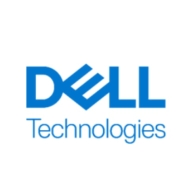

InfluxDB and Dell CloudIQ compete in the analytics category, specifically in data handling and infrastructure analytics. InfluxDB has an advantage in pricing due to its scalable open-source model, while Dell CloudIQ excels in its comprehensive analytics capabilities, offering more potential ROI despite higher initial costs.
Features: InfluxDB is known for high-performance time-series data ingestion, real-time monitoring, and efficient handling of vast data volumes. Dell CloudIQ provides extensive metrics, advanced analytical tools, and detailed insights into infrastructure performance.
Room for Improvement: InfluxDB could enhance its integration with enterprise hardware, improve user interface for less technical users, and expand its community support resources. Dell CloudIQ could benefit from reducing initial setup costs, increasing compatibility with non-Dell systems, and simplifying predictive monitoring features for easier use.
Ease of Deployment and Customer Service: InfluxDB offers a straightforward deployment process with flexible configurations, facilitating quick setup in multiple environments. Dell CloudIQ offers seamless integration with existing Dell systems and benefits from comprehensive support and resources tailored for large-scale enterprises.
Pricing and ROI: InfluxDB offers cost-effectiveness with an open-source framework allowing custom deployments and a scalable pricing model. Dell CloudIQ, while requiring greater initial investment, demonstrates compelling ROI through advanced infrastructure analytics, optimizing operations and reducing long-term costs.


CloudIQ is a no cost Software-as-a-Service (SaaS) offering that provides a simple monitoring interface for an unlimited number of Unity systems. CloudIQ accesses data in near real time to enable monitoring and troubleshooting for Unity systems.
InfluxDB is open-source software that helps developers and enterprises alike to collect, store, process, and visualize time series data and to build next-generation applications. InfluxDB provides monitoring and insight on IoT, application, system, container, and infrastructure quickly and easily without complexities or compromises in scale, speed, or productivity.
InfluxDB has become a popular insight system for unified metrics and events enabling the most demanding SLAs. InfluxDB is used in just about every type of industry across a wide range of use cases, including network monitoring, IoT monitoring, industrial IoT, and infrastructure and application monitoring.
InfluxDB offers its users:
InfluxDB Benefits
There are several benefits to using InfluxDB . Some of the biggest advantages the solution offers include:
Reviews from Real Users
InfluxDB stands out among its competitors for a number of reasons. Two major ones are its flexible integration options and its data aggregation feature.
Shalauddin Ahamad S., a software engineer at a tech services company, notes, “The most valuable features are aggregating the data and the integration with Grafana for monitoring.”
We monitor all IT Infrastructure Monitoring reviews to prevent fraudulent reviews and keep review quality high. We do not post reviews by company employees or direct competitors. We validate each review for authenticity via cross-reference with LinkedIn, and personal follow-up with the reviewer when necessary.